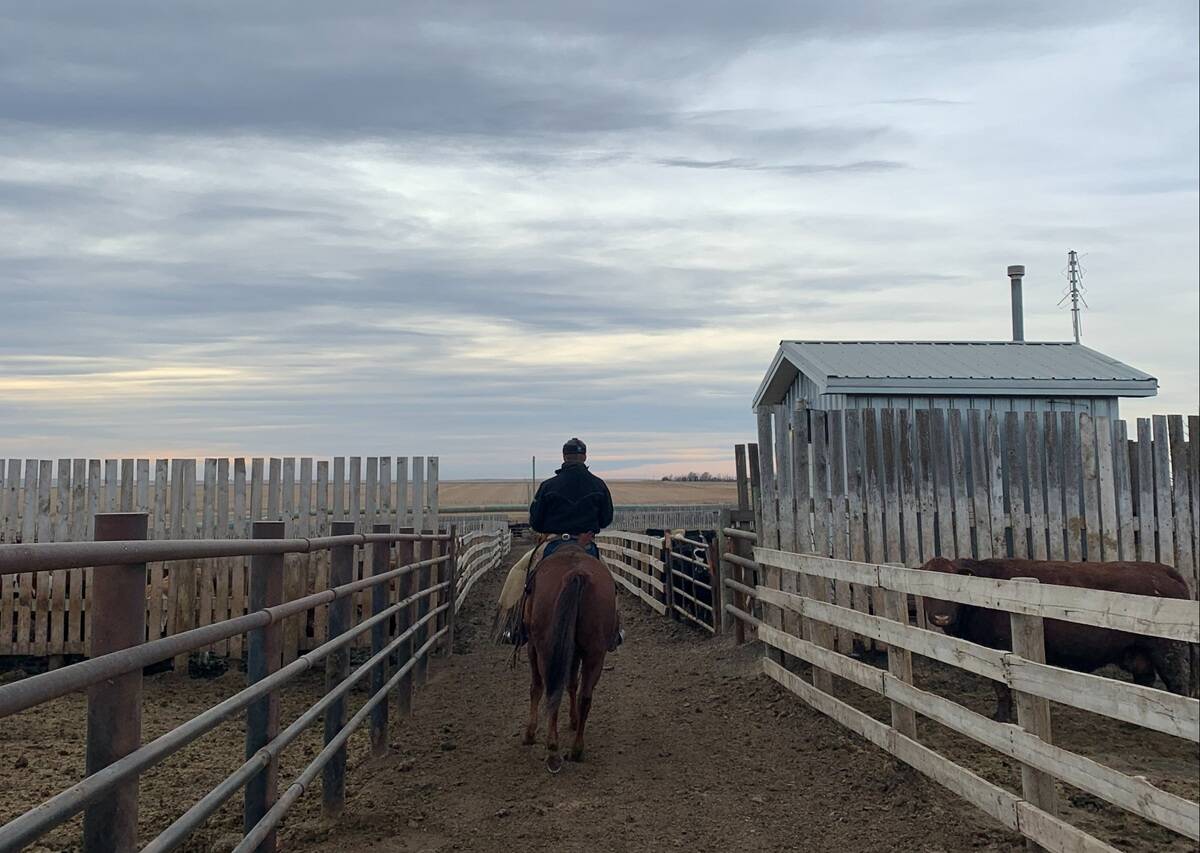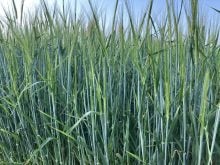There is growing interest in the commercial beef industry around using DNA to inform selection decisions.
While traditionally the realm of the seedstock industry, commercial DNA testing and changes in the way we manage cattle have led to some big changes in how we think about genetic selection. DNA testing, in broad terms, means using a DNA sample from an animal and performing laboratory testing on that sample to identify parts of the genome that animal contains.
A brief outline of the process: DNA testing starts by collecting a tissue sample or hair follicles from an animal. This sample is then sent to a laboratory where the DNA is extracted and “read.”
Read Also

Pen riders still better than tech at detecting respiratory disease in feedlot cattle, says researcher
Recent research found that pen riders are better than tech at flagging signs of BRD in feedlot cattle
New tests will typically read 50,000 to 100,000 pieces of an animal’s DNA. While we have the capability to read millions or even billions of DNA pieces, with 50,000 to 100,000 we can do a really good job of identifying important genetic characteristics of the animal at an affordable price point. Some of the DNA pieces we read are “associated” with specific traits. For example, if a calf carries two copies of the polled gene, specific pieces of DNA will “light up.”
For another example: we may know specific pieces of DNA that are associated with longevity. By looking directly to see if these variants of DNA are present, we can assess the genetic potential of the animal being tested for longevity.
DNA testing can range from sire verification at a roughly $20 price point, specific characteristic testing such as horned/polled or colour at additional cost, or broader trait evaluation at $40 and up. This broader spectrum can include measures of longevity, growth, hybrid vigour, feed efficiency or other traits. Additionally, these slightly higher cost tests can also be used in genetic evaluations (calculation of EPD).
There are various ways we can use this information and incorporate it into our commercial operations.
Use DNA-tested sires
One of the easiest ways for a commercial producer to benefit from DNA testing is to purchase sires that have been DNA-tested prior to sale. This has several benefits. First, the pedigree on the bull being purchased is confirmed with DNA testing, meaning you are getting the DNA you expect when you purchase a sire.
Secondly, high-density DNA testing can be used in genetic evaluation to increase the accuracy of the EPD on the sire you are buying. The inclusion of high-density DNA in a genetic evaluation is roughly equivalent to the knowledge gained from a full calf crop. In other words, DNA can increase the accuracy of EPDs and reduce the risk to a commercial buyer of ending up with the wrong bull for their needs.
Finally, when a sire is tested, those DNA results reside in a computer, and we may not need to retest the sire if we wish to start testing in our own cow herd and learning about factors such as sire efficiency and parentage.
Test replacement heifers
A way to get into DNA over time is to focus on testing replacement heifers. In a perfect world, we would test all candidate heifers, then use DNA-derived information to aid in our selection decisions; however, if we’re really constricted on budget, the next best choice might be to test the heifers we choose to breed. Testing heifers allows us over time to develop a fully tested cow herd.
Test the cow herd
This is a full-on commitment, to collect DNA from every cow and begin using the resulting information to inform management decisions. Again, if budget is a concern, there may be groups of cows more valuable to test than others. For example, if you have a set of cows used to generate herd replacements, then these may be a priority for testing over a terminal-type set of cows.
Test the calf crop
This approach involves testing all calves (steers and heifers) and can be used for determining management or parentage verification to track cattle through to harvest with full individual data. This results in heifers entering the cow herd over time that are tested, and may also enable tracking of feeder calves on an individual basis with accurate pedigree.
The balance of investment in testing versus the potential return to management is going to vary tremendously across operations and will also affect the number of cattle tested, which cattle are tested and the types of tests used.
Sire verification is an example. We may want to run multi-sire pastures and determine both which sires are working, but also only keep replacement heifers from specific bulls. Or we may want to step up an extra level and obtain DNA marker test results for various traits we can use to select replacements.
We may further refine our technology use to develop a total genetic management program, in which we pre-emptively mate specific sires and dams and match DNA with targeted end points in mind.
DNA testing is continually improving and accelerating the pace with which we can advance our operations. It is a technology that likely fits your operation today, although at varying degrees for individual farms, even if it’s simply purchasing tested sires.
















